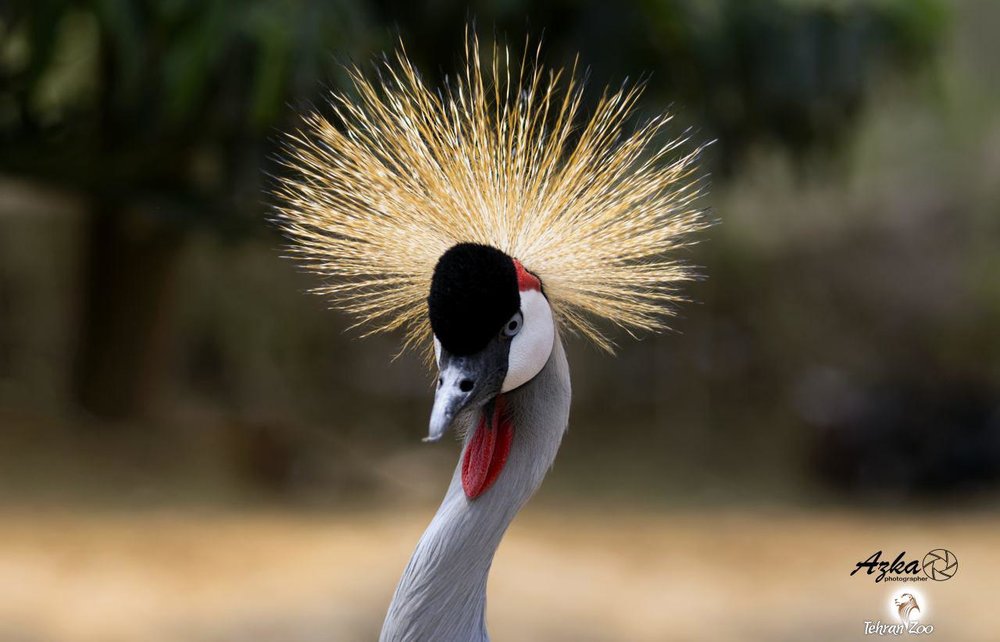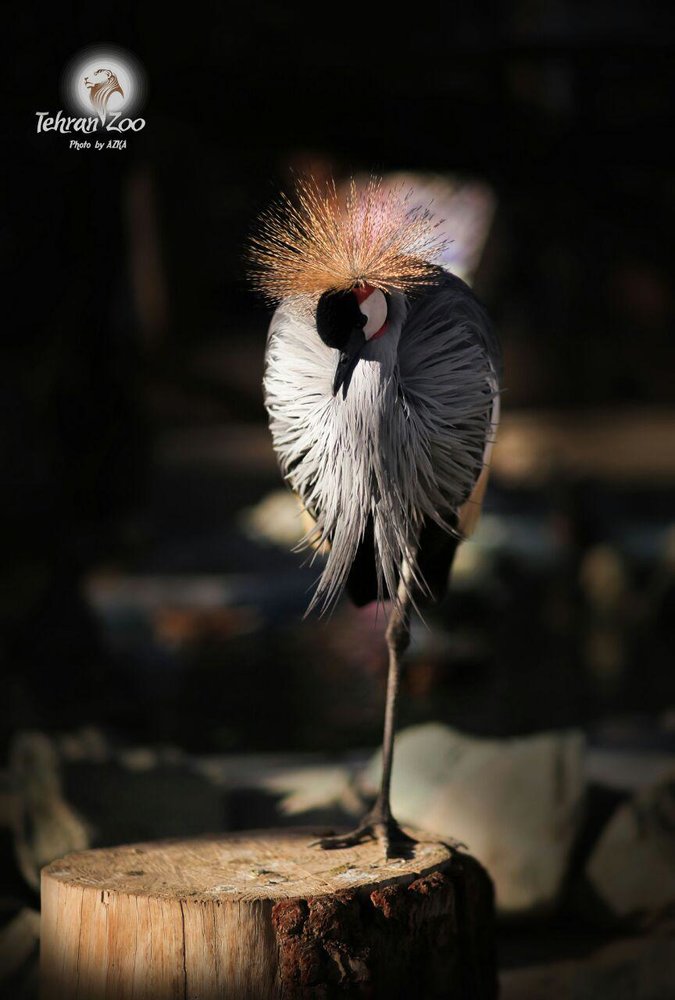A living fossil at Tehran Zoo

With its large yellow crown, Grey Crowned Crane has an odd charm of its own.
It is one of the world’s rarest birds, with two subspecies: East African Crowned Cranes (Balearica regulorum gibbericeps) and South African Crowned Cranes (Balearica regulorum regulorum).
The reasons for the species’ decline are not known for certain but International Union for Conservation of Nature and Natural Resources (IUCN) says the species is threatened by the loss and degradation of wetland breeding areas through drought-related changes in land-use for cultivation, drainage and overgrazing, as well as through the heavy use of agricultural pesticides, declines in fallowing practices, high sedimentation rates (due to deforestation, uncontrolled grass and deep litter fires in the breeding season), dam construction (for hydroelectric power generation and groundwater extraction, leading to changes in hydrological regimes such as unseasonal flooding).
The species is also threatened by live-trapping (for trade), egg-collecting and hunting, and by indirect disturbance from the hunting of large mammals or ducks in wetlands and the activities of fisheries.

Grey Crowned Cranes at Tehran Zoo
Some individuals of Grey Crowned Cranes now fare better at Tehran Zoo, their distinctive plumage is one the most attractive among a colorful group of birds. Tehran Zoo decided to make a better enclosure for them by many simple works such as making hand-made nests, using timbers for resting times and landscape design.
Grasslands, marshes, flooded fields and temporal pools are the best habitats for them in the nature.
African Crowned Crane
The African Crowned Crane is the only crane to perch in trees, favoring solitary trees with wide views. They are considered to be “living fossils” among cranes, having flourished in the Eocene period some 54 to 38 million years ago and surviving the ice age. During their mating dance, two cranes hop and jump gracefully with each other, their wings partly spread.

The reasons for the species’ decline are not known for certain but IUCN says the species is threatened by the loss and degradation of wetland breeding areas through drought-related changes in land-use for cultivation, drainage and overgrazing, as well as through the heavy use of agricultural pesticides, declines in fallowing practices, high sedimentation rates and dam construction.
To the brink of extinction
The distribution range of Eastern and Southern Africa subspecies recorded in Democratic Republic of Congo, Rwanda, Uganda, Kenya, Tanzania, Mozambique, Zimbabwe, Namibia and Angola.
The fad for acquiring wild cranes (they do not breed in captivity) from bird smugglers, nobbling their wings so they can’t fly and keeping them as trophies in private gardens and the grounds of hotels, schools, even foreign embassies, has driven them close to the point of local extinction.
Recent efforts to save the Grey Crowned Crane focus on reducing the impact of the captive crane trade on wild cranes by targeting supply within Africa and demand both within Africa and globally. Efforts focus on understanding the complex supply and demand chains that affect cranes; creating awareness of the status of Africa’s resident cranes and the threat that trade poses to wild populations; and advocating for changes in policies and legislation that govern the trade in cranes, both locally and internationally.
Maurice Wanjala, founder of the Kipsaina Cranes and Wetland Conservation Group in Kenya, is working with local communities to conserve wetlands along the Kipsaina River, an important area for Grey Crowned Cranes.
In Uganda, Jimmy Muheebwa, Project Coordinator for Nature Uganda, works with nearly 200 sites in the country, promoting conservation and restoration of wetlands critical to both cranes and people. Restoration of papyrus in degraded wetlands, with the goal of developing products from the papyrus to support local populations is the other plan for conservation. Fortunately many ranch owners in Africa no longer allow trapping on their properties but the situation is still so hard for Grey Crowned Cranes.

Leave a Comment